This Prodigy Went to MIT at 14, Has Now Built One of World’s Most Advanced Air Purification Tech
Praan, Inc., a cleantech startup based in Mumbai founded by Angad Daryani, has built one of the world's most advanced air purification technologies.
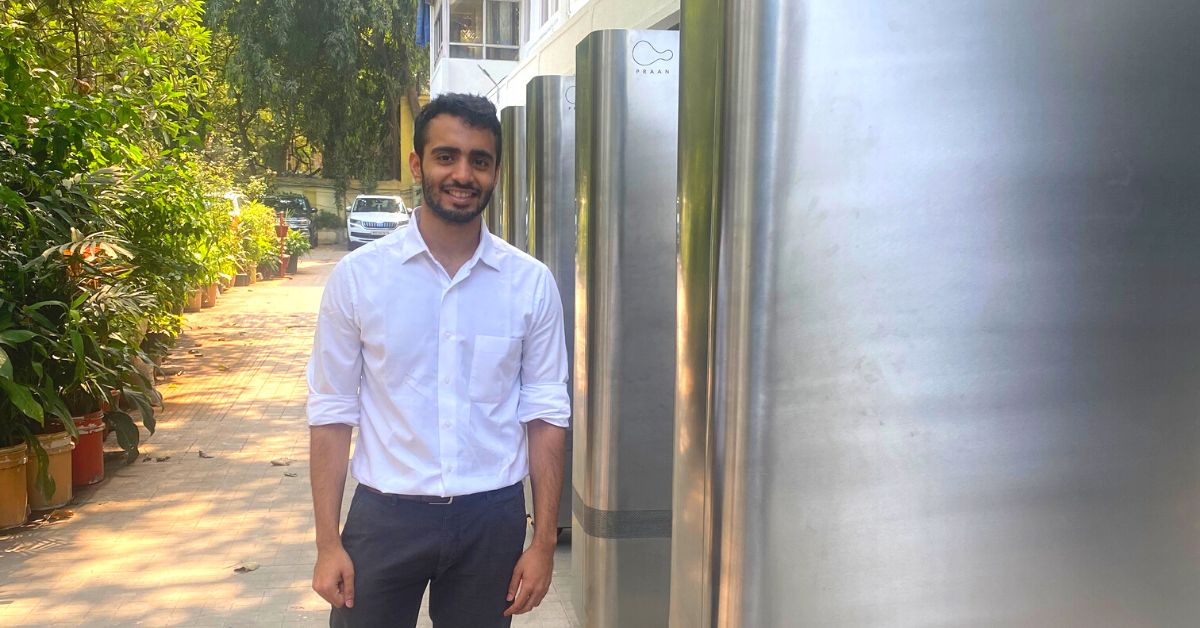
Angad Daryani, the 25-year-old founder of Praan, Inc., a deep-tech startup based out of Mumbai, is part of a generation that grew up with a reality of a bleak future—one plagued with pollution and climate change.
“Previous generations grew up with the promise of an exciting future where If you worked hard and built a career, [the expectation was that] the future would be great. But our generation grew up with the reality of climate change, animal extinction, and severe air and water pollution. Since I was about six years old and learned about these things on National Geographic, this discomfort about a bleak future has stayed with me,” explains Angad, in a conversation with The Better India.
Solving real-world problems has always excited him. A child prodigy from Mumbai, Angad built his first robot and a solar-powered boat at age 8, besides building a homegrown 3D printer by 13 and an e-reader (Virtual Brailler) for the visually-challenged by 15. He briefly dropped out of the schooling system because of his disillusionment with the rote learning-based state board system.
“I found school confusing. While I was doing well academically, the rote-based education didn’t build my fundamentals which would become obvious when I’d compete in Olympiads and struggle to solve problems. At the same time as a hobby, I was building all these complex engineering projects at home on my own simply by watching videos or reading books. When I dropped out of school, my parents hired a tutor who would teach me all the same things as other high school students, while rebuilding my fundamentals. Since I didn’t have homework and was solving problems while learning the topics, I had a lot of free time to focus on my scientific hobbies.” he recalls.
During this time, when Angad was around 14 years old, he wrote an email to Professor Ramesh Raskar, an Indian-born professor at the Massachusetts Institute of Technology (MIT). Currently, he’s an Associate Professor of media arts and sciences at the renowned MIT Media Lab and an advisor to renowned technology giants like Google and Apple.
“It’s amusing looking back at my ignorance, but I wrote to him saying, ‘You are an Indian professor and MIT brings bright young students from around the world to its campus, so why not bring on someone from India?’ Incredibly, he wrote back almost immediately and I ended up working with MIT via their India Initiative for two years building technology that could solve real-world problems in health tech. Even till this day, Professor Raskar remains supportive of my journey and has been an incredible mentor” he recalls.
After those two years working with MIT, he went back to an IB (International Baccalaureate) school, following which he studied electrical engineering at the prestigious Georgia Institute of Technology (Georgia Tech). It was during his time in college when he decided to act on the growing problem of air pollution and began developing solutions for it.
Today, his startup has built one of the “world’s most advanced air purification technologies” using a unique combination of electrical charge dispersion and airflow optimization-based processes – allowing particles to be charged and creating electric fields that move the particles to a collection chamber. Angad combined his background in electrical engineering, product design, IoT, process engineering, and manufacturing to create a whole new class of air purifiers.
In short, his solution works through a network of air purifying units that can clean air within large spaces like factory floors in just minutes by mapping how the pollution is flowing on the shop floor and then strategically placing the air purifiers to capture that pollution. For example, Praan’s latest product called the MK II (‘Mach 2’) has a high purification rate of 1300 cubic feet per minute.
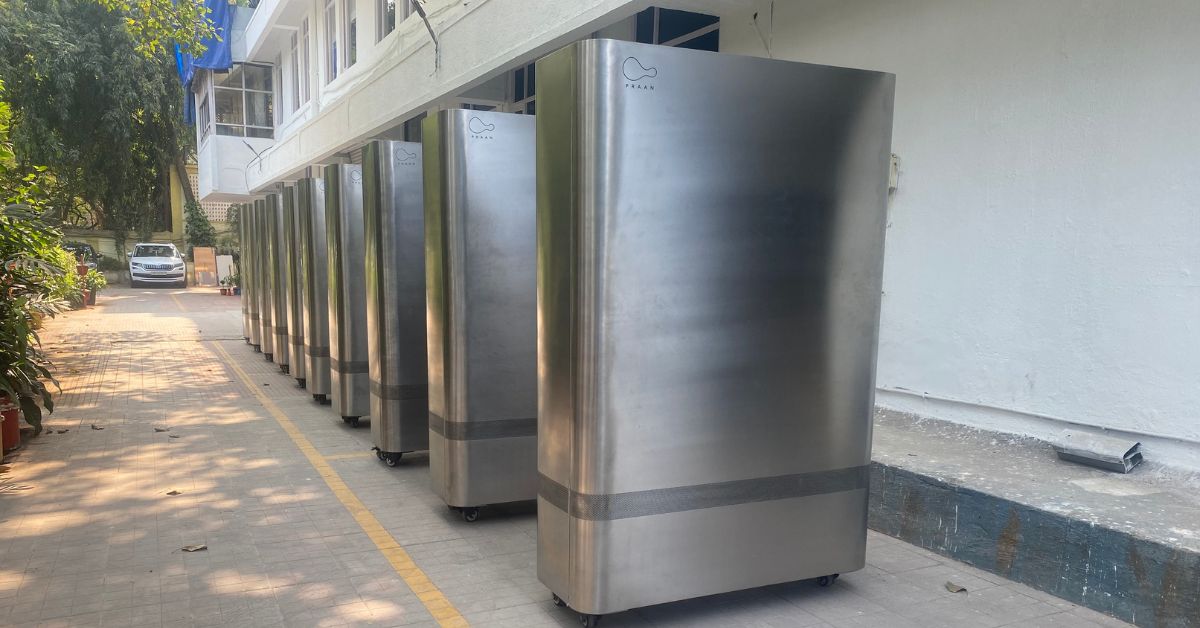
Inspired by illness
Growing up in Mumbai, Angad suffered from asthma. Every winter, particularly during the festive season, he would endure breathing difficulties due to high air pollution and his family would have to leave the city.
“With asthma and high dust levels in the city, I would struggle to play football. I couldn’t run properly because my stamina would take a hit and I would cough constantly. But this was a reality for a lot of people living around me. Today, while I can move to a country with a cleaner environment, I can’t expect my family and friends to do the same. I couldn’t see them breathe this toxic air every day and this is why finding a solution was so important to me,” recalls Angad.
In 2017, just before he began his sophomore year at Georgia Tech, he began working on solutions for urban air pollution but this came with some real challenges.
“If I used Georgia Tech’s infrastructure to build my solution, as per the clauses, they would own all the intellectual property. As a result, I wouldn’t have the freedom to commercialise it as per evolving requirements. And hence, commercially, we didn’t have access to any of their labs. Also, as a result of my visa status, I legally could not register a company and start a business with a co-founder there while being a college student,” he recalls.
“And the truth about building air purification technology is that it’s not just the purifier or the sensor you’re building, but you’re also building the infrastructure to test it in different wind, temperature, humidity, and pollution conditions. Given the lack of financial resources during the bootstrap phase, it was pretty hard to build a safe test chamber that could work in all these different conditions, provide accurate and reliable data and allow you to test with all different materials of dust, gases and pollutants,” adds Angad.
As a result, Angad started building the prototypes of these filterless purification systems based on physics principles out of his apartment room near Georgia Tech where basic characteristics could be inspected visually.
According to this detailed description on Praan’s website, “He would carry the prototype for 2 miles several times every week from his apartment to the on-campus makerspace to build the earliest versions of a filterless air purification system. The device first started with a paint-bucket prototype and then made it to a steel ducting system version.”
“As he continued to work on it, more and more students around campus would find him walking across the lawn with this 5ft-tall metal structure which looked like a jet engine. Out of curiosity, they would talk to him,” it adds.
A couple of weeks later, however, CNN reached out to him to interview for their ‘Tomorrow’s Hero’ series. Following discussions over email, they came down to the Georgia Tech campus and shot a video with him where they discussed his mission, approach and the technology he was building to address urban air pollution. CNN eventually recorded and published this article and video which went viral in no time.
It’s important to note, however, that Angad wasn’t initially interested in building your conventional indoor air purifiers that you can install at home.
“Despite the commercial appeal, I resisted developing a conventional indoor air purifying system. I was not thinking about the top 1% who can afford a Dyson but that child who walks to school every day or a factory worker breathing in toxic air during his/her shifts. My objective was to find something that can be done for large spaces,” he says.
“Another important facet was not to involve filters. If I keep a filter-based air purifier at a large space in Delhi during the winter one would have to change the filter every hour. I wanted to build a filterless system, which means no recurring cost of ownership in these large spaces,” he adds.
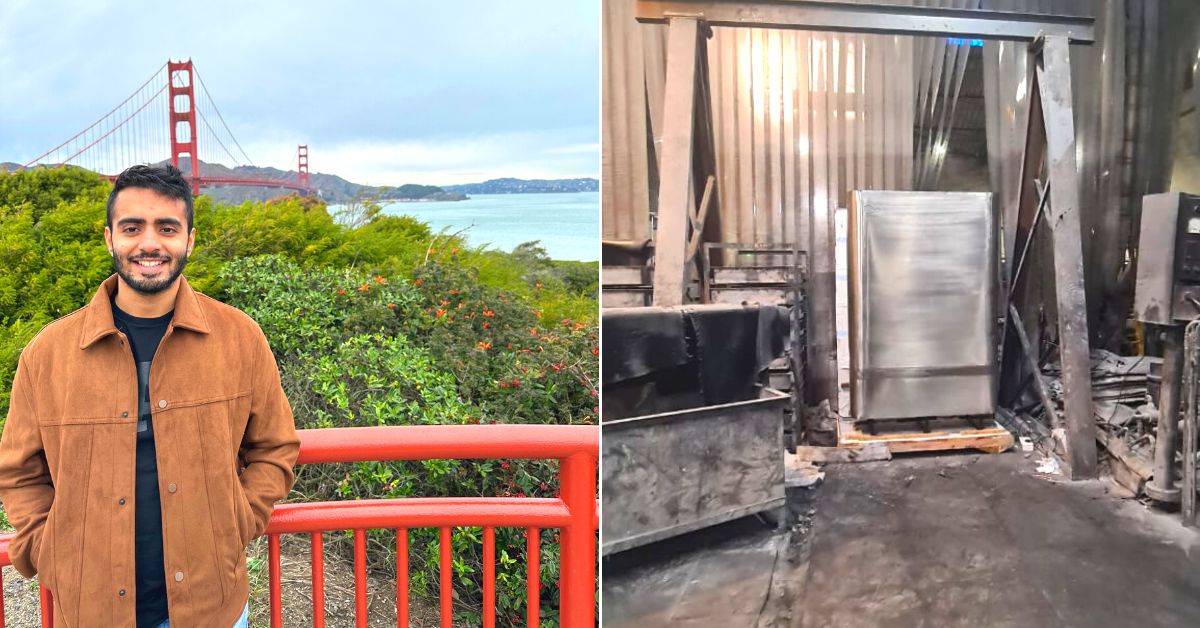
Power of volunteers
A couple of months after his appearance on CNN, Angad returned to India for the summer where he continued to work on prototyping the devices and testing them in India.
As the Praan website notes, “Since this project was entirely bootstrapped with no external financing, all the prototyping was done with off-the-shelf components and built-in Angad’s bedroom and terrace in Mumbai, each prototype was hand built, cut, glued, soldered, and tested outdoors. During this process, he kept posting pictures of his progress on the internet.”
The explanation goes on to add, “Deeptech was still new in India and hence the availability of risk capital was bleak. So Angad had to bootstrap the project and saw 30 more volunteers join him in his mission as he returned to Atlanta in the Fall 2018. This team was fundamentally trying to figure out if filterless air purification using cold plasma technology was possible and was alternatively also experimenting with bioengineering techniques for purifying air in cities.”
Since his team didn’t have an office or access to capital, all experimenting of the core tech was done in public parking lots or park benches in Atlanta during after-hours or on weekends. After a couple of months, Angad and his team of over 30 volunteers developed the first prototypes for filterless air purification devices and learned how to design test rigs for building these systems – a process they say they continue to invent and learn from even today, 6 years later.
This was also the time when the project got the name ‘Praan’. During this time, Angad and a few members of the team even reached out to the Ministry of Environment, Forest and Climate Change in India to propose a filterless approach to outdoor air purification. Following this, in December 2018, they flew to New Delhi and demonstrated the concept for their first prototype.
“Soon after this, the conversations around Praan’s mission grew within the Georgia Tech and Emory University Campuses, leading to many more people applying to join the team of volunteers working on this mission. In a fraction of weeks, the team grew to 64 people in the Spring 2019. This was the largest volunteering team [that] Praan ever had,” notes the Praan website.
“To develop filterless large space air purification technology, you need persons with different specialisations—mechanical designers, chemical engineers, physicists, full-stack developers and those with an understanding of power electronics and embedded hardware, among others. When I started developing this technology in my sophomore year, I knew how to build prototypes but knew nothing about fluid dynamics,” Angad tells The Better India.
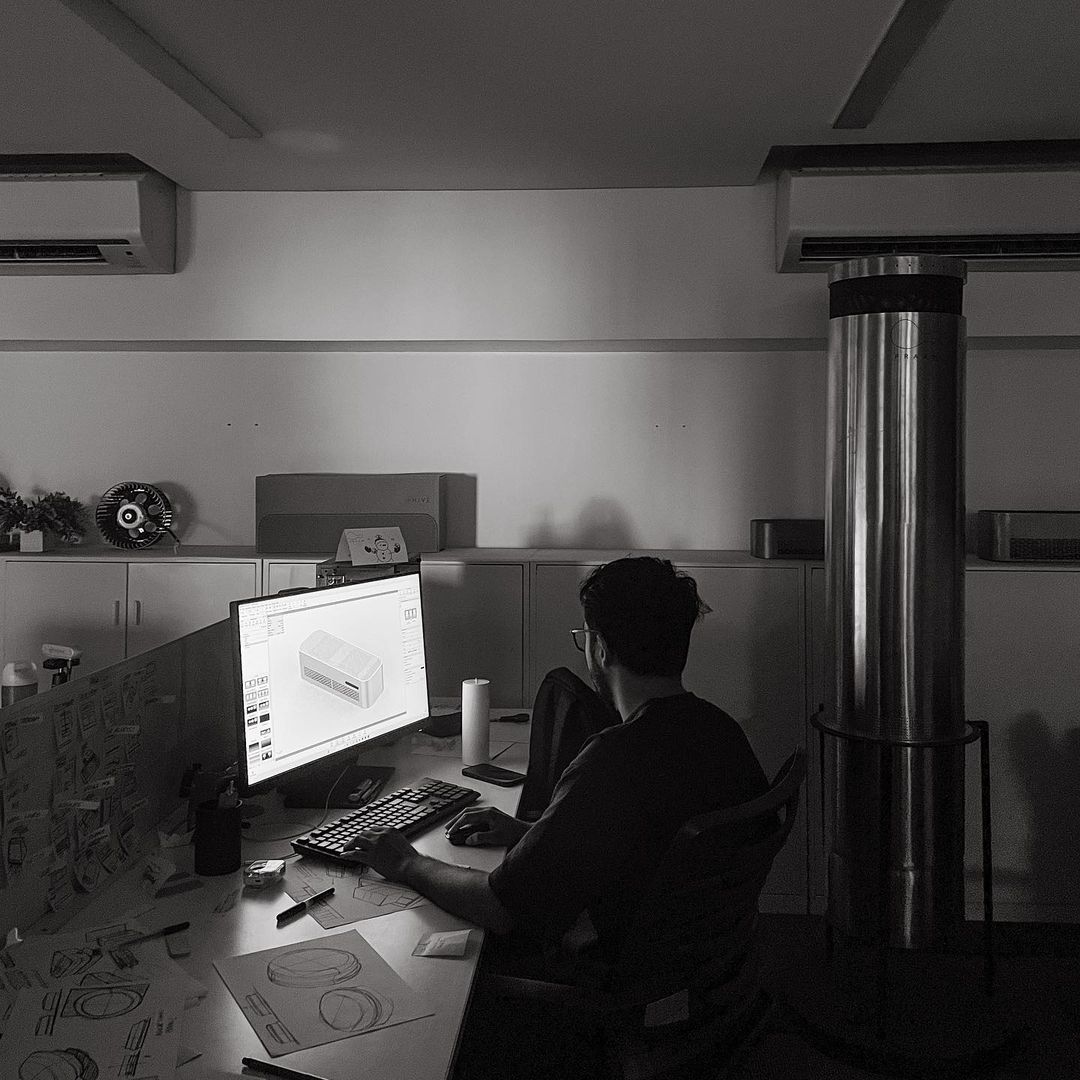
So, how do you entice student volunteers to work on your project?
“You give them recognition on patents, which is very valuable for a third or fourth-year engineering student. And if you can give them real hands-on skills, which they are practising through that semester, they have a good story to tell to job recruiters. Plus, given my prior experience at MIT and the network I developed there, I knew senior people who worked in companies like Apple, Tesla or SpaceX. I could help introduce these volunteers to these people, saying they worked on my project. For example, Patrick Finley, the founder of Lander Challenger, went to work at SpaceX after working as a volunteer for Praan,” he says.
In the following summer, Angad returned to India with one of his Teaching Assistants (TAs) and ran further experiments at a store room belonging to his father’s company. Meanwhile, Naresh Shahani (currently a director at Praan), helped obtain an unsecured loan of $15,000 to fund the research and development. Taken in Angad’s name, this sum was eventually doubled and returned in 2021.
Later that summer, Angad, his TA and two interns put together the prototype of what would become the MKOne Outdoor Air Purifier. The plan moving forward was that Angad would graduate in 2020, run this company full-time after graduating, and raise capital. Despite his best efforts, securing funding was a major challenge. By January 2020, investors hadn’t caught on to the potential of deep tech and the offers on the table were not satisfactory.
Despite these challenges, he managed “to pool together some soft commitments worth $1.35M from an Indian VC fund and a few strategic angels on very bad investment terms”. As these deals were being finalised, the COVID-19 pandemic struck and everything fell apart. Yet to graduate from college, he had to pack everything up and come back to India while completing online classes to get his degree.
But there was a silver lining. Since people were losing their jobs and internships, there were many looking to work on something that would advance their careers. Similar to what he did earlier, Angad offered recognition on Praan patents to anyone who helped develop the technology further either remotely or even as a volunteer.
In total, Praan managed to onboard about 60 volunteers from multiple time zones who chose to dedicate about four months of their time to work on their technology. While the hardware was built and developed out of Angad and his intern’s bedrooms in Mumbai, other volunteers from around the world contributed with their ideas and engineering drawings for their prototypes.
According to the Praan website, there were also “design teams working on ideas for the MK One product, the indoor air purification, bioengineering, carbon capture, and software engineering products—all without any capital in the bank”.
Real funding and assistance finally came in the form of Emergent Ventures, a fellowship and grant programme run by famous economist Dr. Tyler Cowen. It gave this fledgling startup the largest grant during the lockdown period which helped them access capital to build prototypes and test rigs as well. In the next few months, they developed a working prototype of the MKOne Outdoor Air purifier in India.
However, there was very little customer or investor interest and a negligible amount of vendors were willing to manufacture the MKOne prototype. Angad spent about five months waiting for vendors to manufacture the first usable MKOne prototype. Tired of waiting, Angad decided “to build the first MKOne prototype at a utensil manufacturing plant.”
While there were differences between this prototype and future products in terms of dimensions and finishing, they finally had a real product that they could show investors. Moreover, it gave the Praan team real confidence that they could start to manufacture this product in India.
How does this technology work?
Both the MKOne and the more recent MK-II Air Purification systems work on similar fundamentals.
Speaking to The Better India, Angad explains, “Particles are pulled in using fans, charged in a very confined space, immediately separated from the air stream and then pushed down using pulses into a collection bucket. Simply put, it actively pulls polluted air from the top, separates the particulate matter using Praan’s patent-pending filterless technology, collects it in a collection tray and releases cleaner air back into the hyperlocal atmosphere through the outlets.”
“The MKOne was designed for particulate matter concentrations of up to 1000 ug/m3 whereas the MK-II manages AQI up to 40,000 ug/m3. The MK-I was designed for outdoor applications–building compounds, common areas, school compounds, and so on. The MK-II device was designed for industrial use cases—factory floors where there are incredibly high dust volumes and levels. MKOne’s triangular design was for early prototypes since that was a relatively easy shape to manufacture. However, the cylinder is the best shape to ensure that the device doesn’t topple when placed outside in high wind conditions,” adds Angad.
MKOne was first shown to the world in December 2020. The MK-II was designed and soft-launched in December 2023, and commercially launched in July 2023.

“MK-II has eight times the purification capacity and five times the storage capacity of MKOne,” he claims.
Praan has also developed HIVE, an indoor air purifier. Angad claims, “The HIVE software and the EDITH AI support that Praan provides ensures that your air is always clean. Moreover, all maintenance is managed by us.”
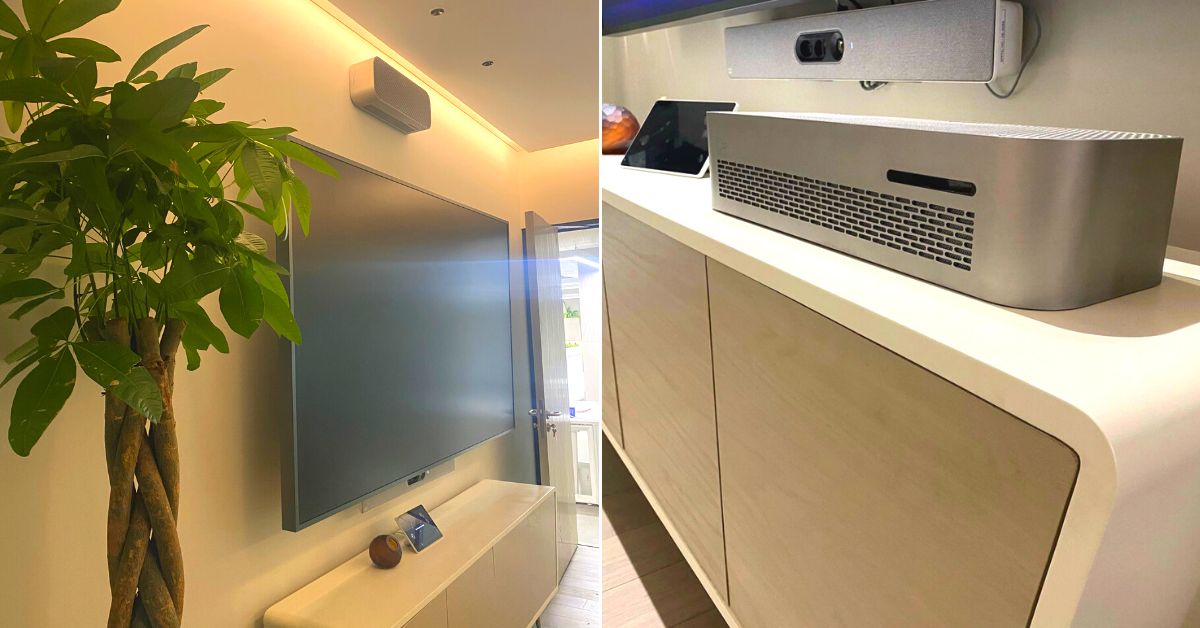
Finally, when it comes to investors, suffice to say that Praan has thus far raised a total of $1.9 million from VCs and Angel investors ranging from the New York-based Social Impact Capital, which, among others, has PayPal co-founder Peter Thiel as a backer. Besides, they are supported by Microsoft, Autodesk and the Marico Innovation Foundation.
Looking ahead, Angad has laid out his blueprint for the future.
“Praan started with the vision of making the future more exciting by ensuring that clean air is accessible to all. We will scale to make industrial, home, commercial, and outdoor products in air purification and mapping—both in hardware and AI-run software. We will also scale direct air removal of carbon dioxide outdoors and indoors for carbon credit generation and permanent storage of CO2. Our bio-engineering team has and will continue to rebuild ecosystems while ensuring greenhouse gas removal around the world,” he says. If you found our stories insightful, informative, or even just enjoyable, we invite you to consider making a voluntary payment to support the work we do at The Better India. Your contribution helps us continue producing quality content that educates, inspires, and drives positive change. Choose one of the payment options below for your contribution- By paying for the stories you value, you directly contribute to sustaining our efforts focused on making a difference in the world. Together, let’s ensure that impactful stories continue to be told and shared, enriching lives and communities alike. Thank you for your support. Here are some frequently asked questions you might find helpful to know why you are contributing?

(You can find out more about Praan.io and their work here.)
(Edited by Padmashree Pande; Images courtesy Praan)
This story made me
-
97
-
121
-
89
-
167















